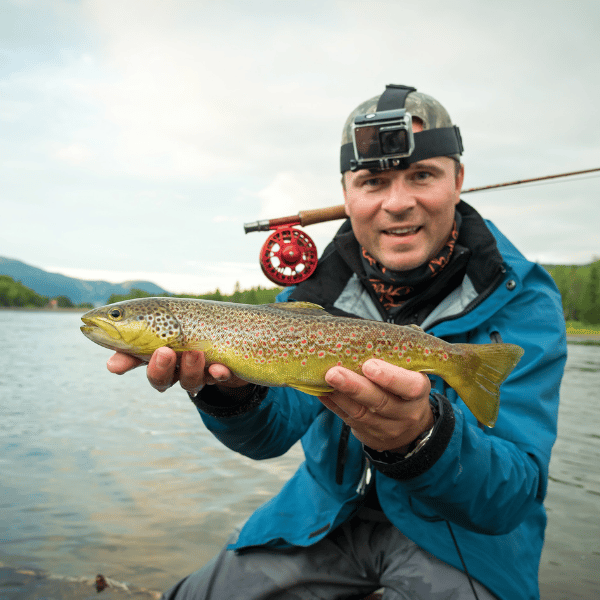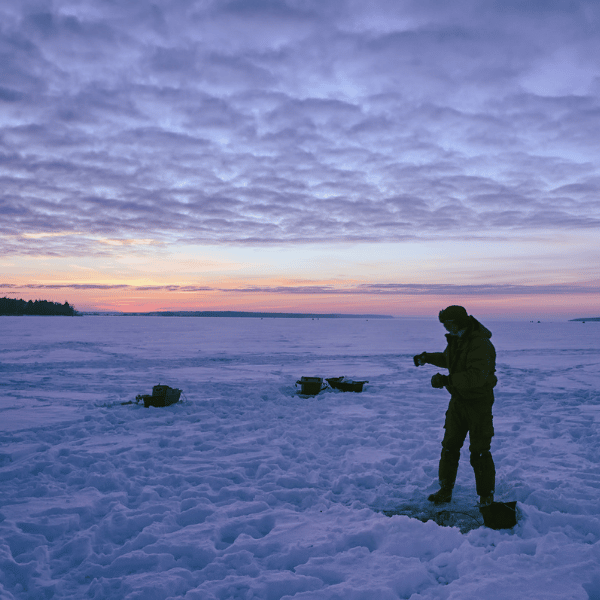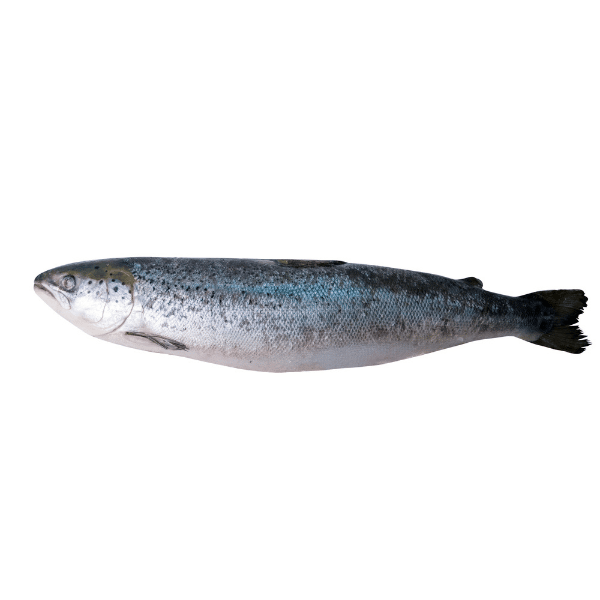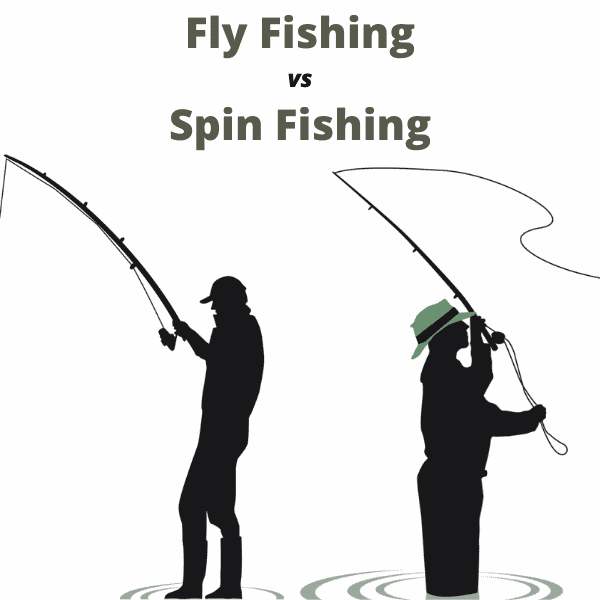How to Jig for Walleye Ice Fishing
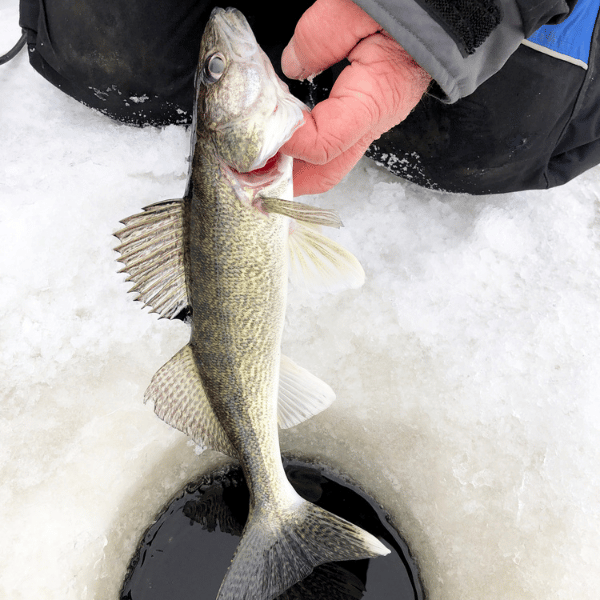
The best way to jig for walleye is matching up the weather conditions with the right bait and jig color, finding the depth of where walleye are located based on the time of the season, and having the technique for the best way to jig for walleye ice fishing.
In this article, we will cover all of these details so you can have an agile walleye jigging ice fishing gear set up and know how to jig for walleye ice fishing.
Contents
Jigging for Walleye
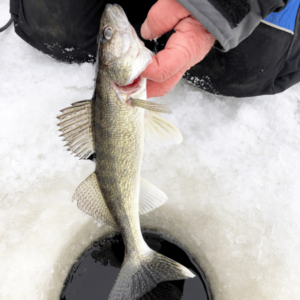
Walleye put up a challenge to first get them on the hook, then fighting them to reel them in. To be good at catching walleye you have to both understand how to jig for them and have the right gear to do so.
Fortunately, walleye remain active throughout the year – even during the winter. So let’s explore the gear that you’ll need and how to jig for walleye ice fishing. We’ll also share some tips on finding the best depth, as well as walleye fishing regulations.
Gear to Jig for Walleye
It’s important to keep in mind that when it comes to any type of fishing, quality matters. Walleye are known for their feisty behavior, and as such, you’re going to want a reel with a good drag. There are a wealth of high-quality reels that will serve you well in walleye ice fishing.
Shimano’s Sedona reel comes to mind. When fishing in water that is home to larger walleye, make sure to use a reel that can accommodate their size. Although many rods and reels are sold together, consider investing in a separate reel to accommodate for the size of fish.
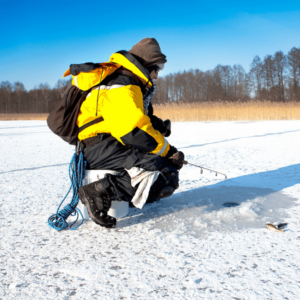
Quite frankly, many ice rods that include a reel aren’t ideal for walleye. Walleye put up a fight every step of the way. Buying quality gear can be the difference between catching many walleye, or losing all of them.
Buy a rod built for walleye ice fishing. Although many rods may advertise to be for walleye, some do false advertise. As long as the rod is a fast-action model with medium power and measures around 28 inches, you should be in good shape.
With your rod and reel out of the way, it’s time to focus on your line. Copolymer, monofilament, or fluorocarbon line with a test that’s 6 to 10 pounds should serve you well due to their flex. This helps buffer some of the shock that you’re going to get from walleye’s aggressiveness. What’s more, it will help withstand the harsh, icy conditions of the water and environment.
You can certainly use superline if you prefer. Just make sure that its test is within 8 to 14 pounds. This is a good option for dead-sticking, as the line’s rigidness provides good sensitivity in the water.
Best Types and Colors of Jigs for Walleye
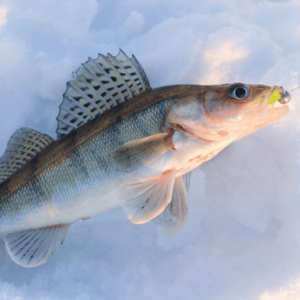
The type and color of jig you should use for walleye ice fishing largely depends on the condition of the water. In water conditions that are clear, you may want to lean more toward silver spoons.
Many walleye ice fishers have been successful in jigging with spoons, as they are highly effective in catching walleye. A silver spoon will mimic the natural movement of minnows – walleye’s favorite food.
The reflective nature of silver spoons does a wonderful job of attracting the walleye and getting them interested in a possible meal. But remember, a silver spoon can only serve its purpose and provide its reflective effect when the water is clear.
It also helps to employ silver spoons early in the walleye ice fishing season. This is because there is typically minimal snow cover on the ice, allowing light to penetrate and reflect off of the spoon more effectively.
Moreover, walleye can usually be found hanging around shallow water early in the season. This should make it easier for you to locate them and employ your jig.
If you’re walleye ice fishing in stained waters, it is best to switch to brighter, more colorful jigs. Natural colors are much harder for the walleye to locate, so be sure to stock your tackle box with an assortment of reds and oranges.
Some of the more effective jigs among seasoned ice fishers include Z-Man’s Ned Rig (effective in shallow waters) and Block Head Wire Keepers (great for cutting the current).
Additionally, you want your jigging to be erratic. You may find it more productive if you use a combination of traditional and erratic jigging. This will help produce a greater abundance of vibrations in the stained water and draw the walleye to your bait.
This method is also effective if the ice has a lot of snow cover or if the lighting conditions are low. The key is to find a jig that breaks through the dark environment and gets the walleye’s attention.
If your walleye ice fishing spot lets you use two poles, you should consider taking advantage of it. This approach is favored by many ice fishers, as it provides the walleye with more options and will increase your chances of getting a bite.
A dead stick can be used as a live bait source for walleye that are less aggressive, while your jigging rod will (hopefully) attract the walleye that are.
Finding Depth for Walleye Jig Ice Fishing
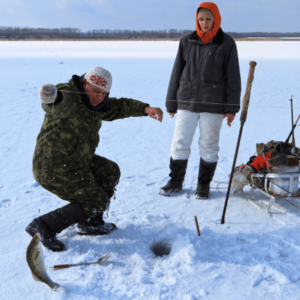
It’s no secret that walleyes can prove to be a challenging fish to catch. Furthermore, what works best in one lake may not work at all in another. However, there are some general guidelines that may help you in your ventures.
The best depth to find walleyes really depends on both the time of season and time of day. In early winter, walleyes like to stay in shallow areas with a depth of 4 to 8 feet. This is prime feeding time for walleyes when they predominately search for minnows, shiners, and perch. If it’s daytime, walleyes will most likely be hanging in deeper water.
In the middle of winter and around noon, walleyes usually like to hang around deep waters in the 30- to 40-foot range. You can also find many walleyes will holding near 10- to 25-foot deep mudflats.
Once evening rolls around, you can find them moving toward shallow water, usually anywhere from 10 to 25 feet. At night, walleyes like to look for schooling baitfish, which are found in the more shallow areas of the water.
As winter begins to change to spring, walleyes will be on the move to more shallow waters once again. The walleyes do this so that they are close to spawning grounds. During this latter part of winter, walleyes can easily be found in water that is 10 to 20 feet deep.
Keep in mind that around noon on bright, sunny days, the walleyes can be found in deep areas of 30 to 40 feet. But once the sun begins to set, the walleyes will start to move toward shallow areas of 10 to 25 feet to feed on their prey.
If you’re into ice fishing at night, this is a great time to focus on shallow areas of the water, as the walleye will stay here throughout the night to continue their feeding habits. But once the sun begins to rise, they will transition to the deeper areas of the water.
How to Jig the Bait to Attract Walleye
Jigs are going to be your most versatile option for luring in walleyes. You can use either plastics or live baits to great success. The key to a successful jig is to get it to promote good movement in the water.
The simple method known as the “lift/drop” is a great way to attract walleye. Lifting the jig will not only keep it from getting snagged on objects below, but it also serves to get the attention of any nearby walleye.
You can use any generic round jig and use minnow heads as your bait. Since walleye love minnow, this increases your chances of landing a catch compared to using plastics. Specialty jigs are available that offer sophisticated rigging options if you prefer that approach.
If you’re using minnows, try jigs that are equipped with wide-gap hooks. Wide-gap hooks can improve the hook’s penetration.
It’s also important to find the right weight for the job. The slightest weight variance can make all the difference in your catching success. There are many combinations of colors and weights available, so be sure to get plenty so you can experiment until you find the one that works the best.
Know Your Walleye Fishing Regulations
Some states offer online fishing regulations that are specific to their lakes. Minnesota, for example, has a “lake finder” that makes it easy to target the lake of your choosing so you can get a better idea of what its regulations consist of.
It is extremely important that you know the regulations of where you are fishing. Also, what is allowed to keep in one lake may be prohibited in others when it comes to size limits. In some cases, you may only keep walleye that are of a certain length.
Moreover, you will need to find out how many walleye you are allowed to take (daily bag limit). Some states/lakes may have hook restrictions during certain months, too, so you will need to thoroughly review the regulations that are in place.
As long as you adhere to each lake’s regulations, you can look forward to having an enjoyable walleye ice fishing season.
